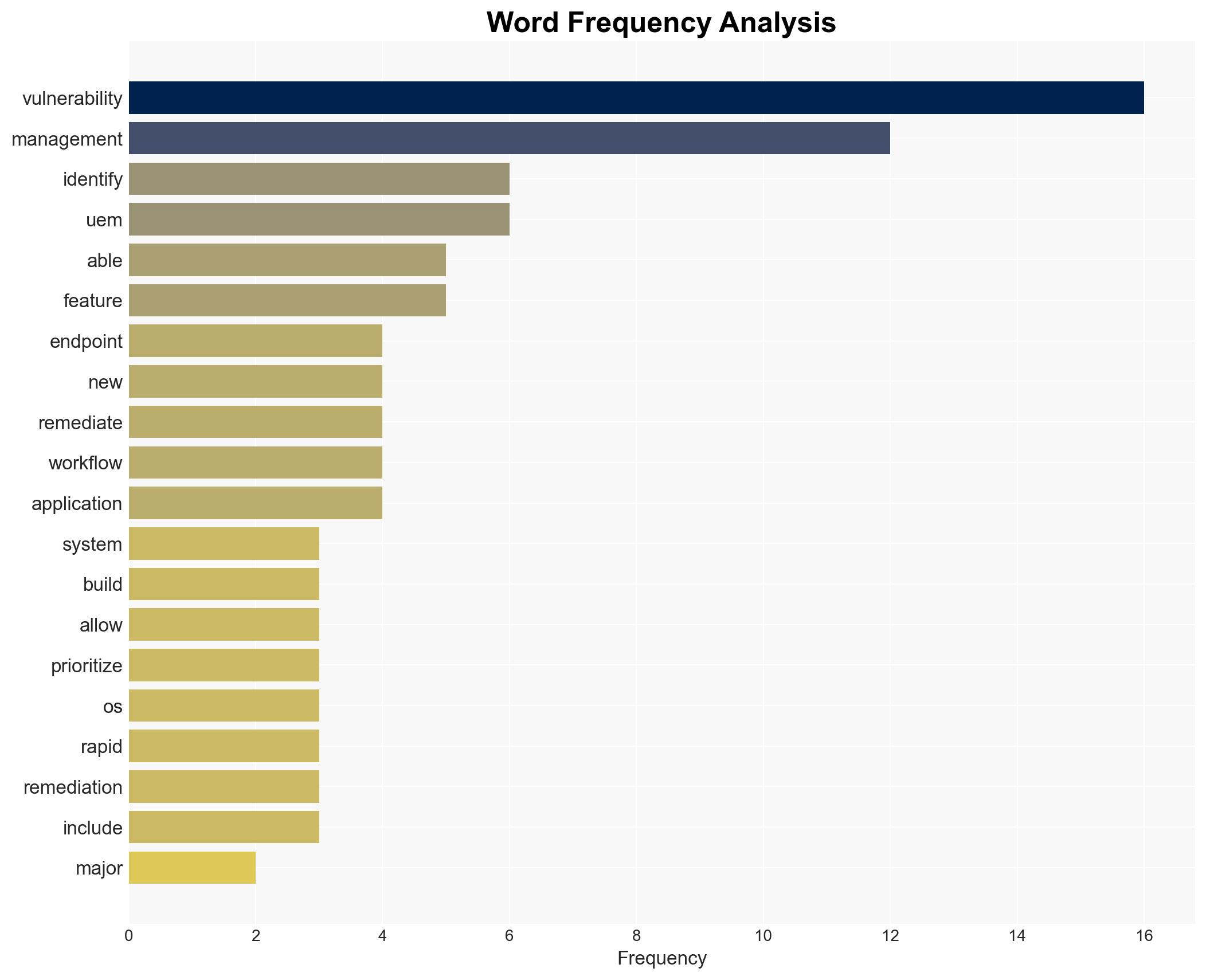N-able Vulnerability Management identifies vulnerabilities across all major operating systems – Help Net Security
Published on: 2025-04-07
Intelligence Report: N-able Vulnerability Management identifies vulnerabilities across all major operating systems – Help Net Security
1. BLUF (Bottom Line Up Front)
N-able has announced a new vulnerability management feature integrated into their unified endpoint management (UEM) product, Central. This feature provides organizations with a comprehensive view of vulnerabilities across major operating systems, enhancing their ability to identify, prioritize, and remediate threats efficiently. The integration aims to address the increasing volume and complexity of cyber threats by offering automated workflows and continuous visibility into vulnerabilities.
2. Detailed Analysis
The following structured analytic techniques have been applied for this analysis:
General Analysis
The introduction of N-able’s vulnerability management feature within their UEM product represents a significant advancement in cybersecurity capabilities. By unifying the management of vulnerabilities across Windows, Mac, and Linux operating systems, organizations can streamline their security processes. The feature’s ability to provide severity scoring and Common Vulnerability Exposure (CVE) details allows for rapid prioritization and remediation, which is crucial given the daily disclosure of vulnerabilities. This integration reduces the need for separate tools and enhances operational efficiency.
3. Implications and Strategic Risks
The integration of vulnerability management into UEM systems has several implications. It enhances the ability of organizations to protect their digital infrastructure, thereby reducing the risk of cyberattacks. However, the reliance on automated workflows and continuous scanning introduces potential risks if not properly managed, such as false positives or system overloads. Additionally, as cyber threats evolve, there is a risk that the system may not adapt quickly enough to new vulnerabilities, posing a threat to national security and economic interests.
4. Recommendations and Outlook
Recommendations:
- Organizations should implement robust monitoring systems to manage and verify the outputs of automated workflows.
- Invest in continuous training for cybersecurity personnel to ensure they can effectively utilize the new features.
- Consider regulatory measures to ensure that vulnerability management systems are kept up-to-date with the latest threat intelligence.
Outlook:
In the best-case scenario, the integration of vulnerability management into UEM systems will lead to a significant reduction in successful cyberattacks, enhancing overall cybersecurity resilience. In the worst-case scenario, failure to adapt to new threats could lead to increased vulnerabilities. The most likely outcome is a moderate improvement in security posture, with ongoing challenges in keeping pace with the evolving threat landscape.
5. Key Individuals and Entities
The report mentions Jim Waggoner as a significant individual involved in the development and announcement of the new feature. The organization N-able is central to the report, focusing on their efforts to enhance cybersecurity through their UEM product.





